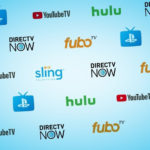Are you unhappy with your cable or satellite provider? Looking for a cost-effective alternative to those services that will allow you to get you the entertainment you want at an affordable price?
If so, chances are you’re shopping for the best streaming device, otherwise known as a streaming media player.
For our top streaming device recommendations, please see the product list above. We’re confident you’ll find something to suit your needs.
To learn more about streaming media players and how to make an educated purchase, please read our product shopping guide below.
Box vs Stick
Media boxes, which run the same way as a provider’s box
To the untrained eye, it may seem inconsequential which one you get. After all, they’re both designed to do the same thing.
But that’s not true.
A stick system serves just one purpose: WiFi streaming. You plug it in, set it up, and it utilizes your home WiFi to stream whatever you’re watching. But that’s where the functionality ends.
A media box includes more interactive elements, including chat services, linking to computers, and video gaming. If you want to do more than watch TV and movies, you need to have a box.
What do you want to stream?
As you browse streaming products, you’ll immediately notice two distinct options available to you.
HDMI sticks, which work like a USB for your TV
Once you’ve chosen between a stick and a box, you’re still only halfway there.
The other important question to answer is this: what do you want to stream? It’s true that each system contains apps for your usual array of providers – Netflix, Hulu, Amazon Prime, Crackle, and so on – but different systems contain different content providers that others don’t carry.
So, what’s your pleasure?
Original series
When it comes to original content, Amazon, Netflix, and Hulu are all producing. If you’re a fan of Netflix and Hulu material, a Roku or Apple TV would do fine. But an Amazon Fire or Stick utilizes Amazon Prime’s service to get a lot of its programming. If you’re drawn more to that, Amazon would be the way to go.
Classic shows
Just about every service delivers some classic television, but it’s spread across different platforms. For example, you can watch Friends on Netflix, but you can’t watch individual episodes on Amazon. You can watch SpongeBob SquarePants on Amazon Prime but not Hulu. And you can watch South Park on Hulu but not Netflix.
It’s a difficult balancing act, but depending on the kind of classic shows you like, Roku will probably do the best. The reason: Roku has better access to channel-specific apps than Amazon.
Current television
Due to the complicated nature of broadcasting rights and ratings, a lot of current television episodes are shown on streaming services a day after they air. Apple TV and Roku have the best access to channel-specific programming, such as CBS, HBO, NBC, ABC, and more.
Movies
When it comes to films, Amazon is king, as they have access to pretty much everything current. You’ll find some cool selections through specific channels provided to Roku and Apple, but Amazon definitely leads in the area of current content. It’s not going to be like PPV (where the film is available one month after hitting theaters), but it will be faster than waiting for Blu-ray to arrive.
Sports
One of the sad parts to streaming media is that people are still working out the kinks to sports channels. The current leaders in this are the MLB (Major League Baseball) and WWE (World Wrestling Entertainment), both of which offer subscription-based services. The rest are simply highlight channels that rarely offer full games. Unless you’re exclusively into baseball and wrestling, you’ll have to watch games at your local bar when you switch to streaming media.
Random channels
Roku offers the best selection of random channel apps. You’ll find a ton of oddity channels here, from vegan cooking to classic cartoons made in the 1930s. There’s even a channel that simply features cats playing around with yarn and stuff.
Media websites
For the video junkie, every system has access to apps and services provided by YouTube, Twitch, DailyMotion, and more. But be forewarned: these apps are often behind the times by a week or so. If you’re looking for up-to-the-minute videos, you probably won’t find much.
What you’re viewing: HD/4K
As of this writing, no one has released anything capable of having a 4K adaptable system. That’s not to say that they aren’t in development, but for the time being, every system on the market is still broadcasting in standard HD.
The big reason no one has made the push is because no one has made the effort to turn all of their streaming services to 4K. It’s simply a matter of demand and time. If you truly want to see old episodes of Star Trek in 4K, you’ll probably have to wait until a service like Netflix upgrades everything. In the meantime, there isn’t much of a demand for it on either side.
We’re not saying that the streaming device you buy won’t work with 4K televisions and monitors. We’re just saying that you probably won’t be utilizing that aspect of your TV with these players.
Remotes
Each remote comes with its own set of pluses and minuses. The Amazon models are sleek and modern looking: small buttons with a slight rise, smoothed out edges, and a flat dial for easy thumb selection. However, sometimes that giant thumb button doesn’t respond like you want it to, and depending on how fast your connection is and how up-to-date the software is, it could get very clumsy.
Roku remotes exude a classic look with a shiny black design. They include a D-pad for selection and a few buttons for selection control. One of the added bonuses of the Roku is that, from the Roku 3 model and up, there’s a headphone jack in the side. You can watch whatever you want without disturbing others, and you can walk away from the TV and still hear the audio.
With two buttons and a thumb controller, the Apple TV remote is as basic as it gets. If you want real power over the device, you’ll want to switch up to the app that you can download on your iPhone or iPad. The drawback is that, depending on the signal in the room, your device may have a delayed response.
Updates
Every streaming system comes with frequent updates. Why? Because technology changes quickly and often, and these systems adapt with them. It truly doesn’t matter which one you buy; you’re likely to see an update at least once or twice a month, and failure to update these devices will cause problems with your service.
Gaming
Every box system now includes gaming capabilities. But don’t expect to purchase a streaming device with gaming capabilities equal to that of an Xbox One or PS4.
The Amazon and the Apple TV are pretty neck-and-neck when it comes to selection, and with both, you have the ability to buy modern game controllers to work them. The Roku systems are more for puzzlers and basic titles like Tetris.
WiFi vs. port
We’re living in a WiFi age, but WiFi isn’t always dependable — especially at home. Depending on where you live, you may experience dropouts from time to time. Streaming sticks are no different, and they often suffer greater problems, as they’re plugged into the back end of a television or monitor with the front already blocking part of the signal.
Computer connectivity
An Apple TV uses its AirPort system to connect to your iMac and other devices. This makes for easy transfer of files, including downloaded movies, music, photos, and more.
The Roku comes with a USB port so you can download material to a memory stick and play it on the Roku, but there’s no way to connect it to a PC at this time. The Amazon Fire has absolutely no capability to do this remotely or by USB.
Price
For most buyers, the entire reason you ran to a streaming device was because the cost of cable or satellite was burning your money away. So price becomes everything in the end.
Not surprisingly, the Apple TV costs the most right now, but that’s what we’ve come to expect with Apple products in general. Prices vary depending on the device’s storage capacity. You’re also paying for its interaction with your devices, along with Apple Care if you want it insured.
The Roku and Amazon Fire are two different beasts when it comes to pricing. For the boxes, the Roku is cheaper than the Fire, but when you get to the sticks, you see the Amazon model is cheaper than Roku’s. The Roku seems a bit more balanced in terms of overall price, but the Amazon brand usually has the cheaper deal for the basics.
Keep in mind that with a device, you’re still buying a subscription service. Most services like Hulu and Netflix are around $10 per month for streaming. Amazon Prime service, at this time, is $99 yearly or $11 monthly. These three basic services cover most everything, but they don’t include speciality channels like HBO or sports like MLB.





